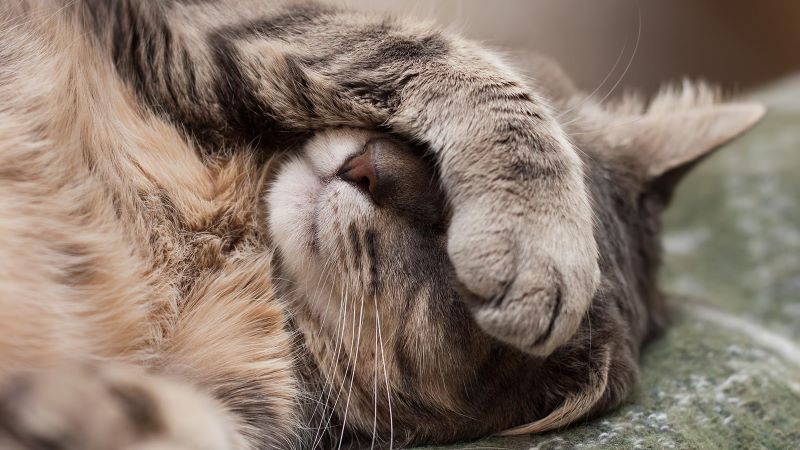That knowing look you get from your friend when you start your sentence with, “Well, he starting using the bathroom outside of the litter box and it looked painful when he urinated,” is all too telling of the fact that there are illnesses to which cats just seem prone. It can be helpful to be in the know when it comes to the most common ailments vets see in their offices. For cats, it is vomiting/diarrhea, feline lower urinary tract disease, and hyperthyroidism. Let’s break down the signs and symptoms of these illnesses, and talk about possible treatments to get your kitty back on his feet.
Vomiting and/or diarrhea can plague your cat for a number of reasons.
Kidney disease, food poisoning, intestinal parasites, and hairballs are a few of the causes. Vomiting can range in seriousness from the occasional bout from overeating or allergic reaction to a particular food, to more frequent vomiting due to a disease like pancreatitis. Occasional vomiting can be typical in cats, but a cat who is vomiting frequently or whose vomit contains blood, mucus, or bile requires an immediate trip to the vet. Dehydration is a common problem associated with vomiting and diarrhea in a feline, so make sure to offer plenty of fluids.
Feline lower urinary tract disease (or FLUTD) is another ailment that plagues cats.
FLUTD refers to a group of diseases affecting the bladder and urethra. FLUTD affects middle-aged, overweight, and stressed cats more frequently. The cat I mentioned in my opening sentence is most likely suffering from FLUTD, as the disease may cause your cat to strain when urinating, to urinate outside of the litter box, and/or to have blood in his urine. In her PetMD post on the disease, Dr. Lorie Huston says that while it’s not always possible to prevent FLUTD, making sure to encourage water consumption, keeping the litter box clean, and eliminating environmental stressors can help.
The third condition that most commonly affects cats is hyperthyroidism.
Hyperthyroidism is overactivity of the thyroid gland, often caused by a benign thyroid tumor. Hyperexcitability, weight loss, increase in appetite, vomiting/diarrhea are all signs of hyperthyroidism. There are several treatment options available if your cat is diagnosed with hyperthyroidism. If only one thyroid gland is affected, surgical removal is often advised. Radioiodine is another option, but must be administered in a confined medical facility, since the treatment itself is radioactive. After treatment, your cat will need to be hospitalized for several days or even a few weeks to allow the radioactive material to clear the body before coming in contact with family members. A third treatment option is anti-thyroid medication, but it is important to note that these must often be given for the duration of the cat’s life. A high-protein, highly digestible diet is also often recommended, as poor absorption of nutrients is often a consequence of hyperthyroidism. No matter the treatment plan you choose, it is important to keep regular vet appointments so that your veterinarian can monitor your cat’s progress.
Now that you know some common cat illnesses, you can be more aware of what is going on inside your kitty’s world, and know when to call the vet. None of us pet parents wants to see our furry children sick or in pain, but knowing what to watch out for and being informed of possible treatment plans can often put our minds at ease. By enrolling your cat in pet insurance, you can afford the best veterinary care possible when your cat isn't feeling his best!

